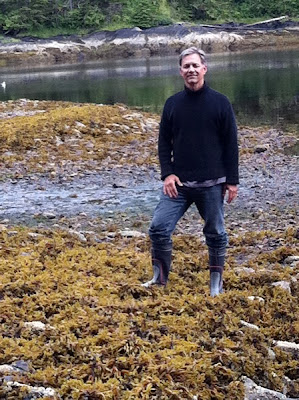Weather blew in heavy the night before we were supposed to leave King Pacific Lodge, courtesy of a big low-pressure system that came down from Alaska. High winds, torrential rain and low ceiling prevented the float planes from coming in to get us, also preventing the incoming group from arriving (we had the better deal!). The day before we went into lodge “lockdown,” when no boats could go out, a few of us got a guide to take us out to a rock grouping where a colony of 70-80 Stellar Sea Lions watched us approach. The big alpha males sat highest on the rocks with the most commanding presence, but there was great concern (and much bellowing) as we approached.
As fearsome as the biggest 800 lb guys looked, they were easily scared. We nosed the small boat right up to the rock, took these photos, and watched their response. The guide said that the sea lions were basically big chickens, then yelled at the group. The surprise of that caused the less confident ones to jump for the water, unanimously soiling themselves, or the rocks, in their frantic effort to get away from us. The sea literally turned brown as they landed, turned, then scowled at us. Within minutes, they all climbed back onto the rocks. Big stink, big fuss.
Over the course of the next few days of being stuck at KPL, the group got anxious about leaving. After three days of still not being able to get any planes in, the lodge organized our extraction by boat. When those boats finally pulled up to the dock, the clamoring of the guests to get on a boat and get home was reminiscent of those lions abandoning the rock. That is, without the mess.
























































